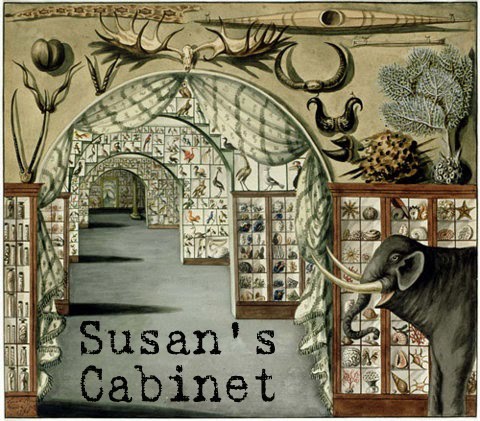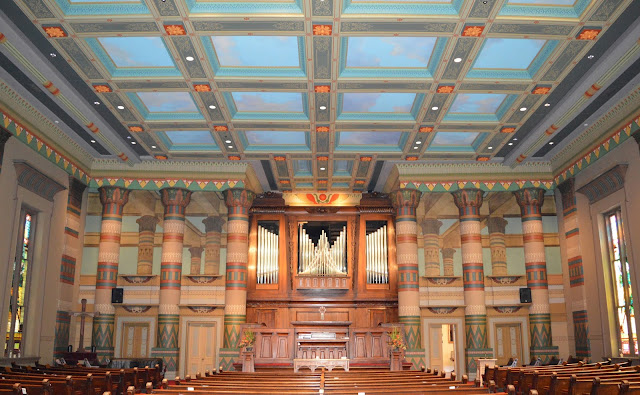There are so many magnificent
churches to see – architectural jewels abound! (They're like free art and history museums.) One of my favorites is right here in the U.S.
and just 2-hrs away in Nashville U.S. and the other two, located in Essex , Connecticut (1846)
and Sag Harbor , New York Philadelphia
The 1849 church was the third
building of the First Presbyterian congregation on this site (the first two
burned down). It originally had plain glass windows and the congregation ran
out of money before the interior was completed. The painting scheme, which
includes tromp l’oeil frescoes of Karnak , was
not done until 1880-82. (Being that Nashville is
on the Cumberland River, the church acquired the nickname “Karnak on the Cumberland
Egyptian revival architecture
uses ancient Egyptian motifs such as lotus columns, sphinxes, winged sun disks,
pylons, cavetto cornices, and obelisks.
 |
The 1917 addition to the
church also incorporates winged sun disks in the cavetto cornices
|
 |
The outdoor lamps on the
addition have sphinxes on top
|
The rise of the Egyptian
revival style in the 19th century is attributed to the public awareness of
ancient Egyptian monuments generated by Napoleon’s scientific expeditions in Egypt and the later publication in the U.S. U.S. was the
Mikveh Israel Synagogue in Philadelphia U.S. U.S. is the Washington Monument
 |
The
stained glass windows were added in 1887.
|
 |
Beautiful seats in the
balcony
|
 |
View from the balcony. The curved walnut benches replaced
the original box pews in 1882.
|
President Andrew Jackson was a member of the church, and the first church building (1814) was the site of his presentation with a ceremonial sword after the Battle of New Orleans. The second building (1832) was the site of Tennessee Governor (and later U.S. President) James K. Polk’s inauguration. The current building was used as a military hospital during the Civil War (by Federal troops), as a refuge from floods in 1927 and 1937, as a place to sleep for thousands of soldiers on leave during WWII, and it currently tends to the needs of the less fortunate in the downtown community. In 1954, the First Presbyterian congregation sold the building to some of its members and moved to the suburbs. It then became known as the Downtown Presbyterian Church.
 |
Original gas lamp shades previously
used on either side of the lectern platform,
on display in the history room
|








No comments:
Post a Comment